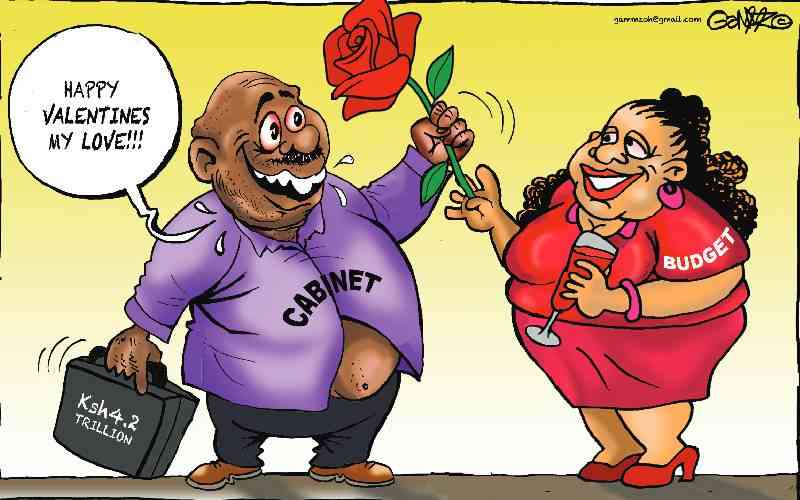By JOE KIARIE
Mr Oscar Ouma’s crash on Nairobi’s Mombasa Road recently is noted in traffic police records as a non-injury, single vehicle accident: He drove off the road and hit a tree.
The accident report he filled out shows this was not a freak accident. He says he was overtaking a minibus when a matatu driver suddenly accelerated to prevent him from getting by. Thousands of Kenyan drivers are familiar with this dangerous response. It usually leaves the overtaking driver facing the flashing lights of oncoming traffic.
Left with no room to brake and slip back behind the matatu and about to collide with an oncoming car, Ouma was forced to veer off to the right. The damage caused by hitting the tree was so severe, the car had to be towed to garage for repairs.
“I had been involved in such an accident before and was never compensated,” he says. “The insurance company insisted it was all my fault. I knew what their answer would be and never bother calling.”
Ouma was a victim of one of the anti-social driving behaviour that is rarely prosecuted as a traffic offence, despite its role in causing many crashes. Speeding is often blamed for most crashes, but experts say other unruly behaviour could be blamed.
These include dazzling oncoming motorists with full beams, tailgating (following too closely), accelerating to block over-takers, hogging the road and changing lanes improperly. Some of the behaviour is not offences specifically mentioned in the Traffic Act.
Prominent offences
And given that enforcing more prominent offences is already a challenge, new laws or policing are unlikely to help prevent them. However, there is a growing awareness dealing with anti-social driving habits. This may be key to reducing motor-vehicle accidents.
Liz Nyaguthii, a Kenyan based in the US, says she was recently tempted to park by the roadside and ask for a driver due to tailgating while on a visit to Kenya.
“It drove me crazy to have cargo trucks revving their engines right on the bumper of my Toyota Vitz,” says the 22-year-old. “I am not used to this. I could not stand it.”
In Washington, where she is based, drivers who follow others too closely are slapped with a fine of $124 (Sh10,540). Traffic rules require drivers to “allow sufficient space between vehicles to enable any other vehicle to enter such space without danger.” On Kenyan roads, the practice is to ensure no such space, leading to many crashes among new drivers. Edward Maina, an experienced matatu driver, says one has to be very alert to avoid falling into the trap of the uncaring drivers.
Getting road users to follow traffic rules, let alone avoid anti-social driving habits, remains a challenge. Traffic Commandant Samwel Kimaru recalls standing on the shoulder of the Thika superhighway recently giving a lecture on safety to an errant motorist. The man, driving a private car, had boiled over in anger when he was waved down by policemen and asked why he wasn’t wearing a seat belt. He appeared to think this was a small infraction and perhaps suspect he was being buttered up for a bribe request. Tempers flared even further when the commandant, who was heading to Ruiru for a meeting, intervened and tried to talk to the driver.
Traffic Act
Worryingly, not even the much-hyped Traffic (Amendment) Act 2012, which imposed heavy fines on traffic offenders has managed to check this perennial menace. Motorists, motorcyclists, commuters and pedestrians continue to break virtually every road rule, with only a small percentage of offenders facing the law. From overlapping to speeding, drunk driving, exceeding carrying capacities, driving dangerously on pavements, pedestrian walkways and petrol stations to escape traffic, drivers have expressed total disregard for the law.
Stay informed. Subscribe to our newsletter
The results have, as usual, been grave. Police records show 1,590 lives were lost on our roads between January 1 and June 30 this year. This is a slight increase from the 1,571 lives lost during the same period last year. Within the same period, the number of accidents has slightly decreased from 3,436 in 2012 to 3,117 this year while the total number of accident victims has also slightly dropped from 7,555 to 7,214.
While there are slightly fewer accidents, those that happen are deadlier than ever. Pedestrians still account for majority of the casualties, with 740 lives claimed in the first half of the year as opposed to 780 in the same period last year.
Kimaru admits that the new law is yet to fully rein in on errant road users, a situation he blames on a culture of irresponsibility and challenges in law enforcement.
“There remains a lot of impunity on our roads due to wide disregard for the new laws,” he states. “Most people only observe the law when being watched over by police.”
He says a rampant “culture of carelessness“ presents the strained police force with a major challenge.
“We cannot have officers at manning every inch of every road,” he says. “In Nairobi area, we only have 700 police officers assigned to regulate traffic. Countrywide, we have 3,000 officers watching over 1.5 million vehicles. This is overwhelming. We also have a serious shortage of patrol vehicles.”
Beyond control
Kimaru says majority of the accidents have been beyond the control of the police.
“Pedestrians are the main victims due to disregard for laws,” he says. “Many still cross roads without observing, while using phones or even drunk, leaving themselves at the mercy of speeding drivers.”
He admits that lack of footbridges across busy highways has exposed pedestrians to fatalities but says ignorance equally persists. “Along the Thika highway, they still prefer jumping over rails and running across 12 lanes instead of using footbridges. Most parents do not escort children to school and back, yet they have to cross highways.”
He blames a fatalistic attitude among motorists and commuters who see accidents as caused by God. “But the fact is that most accidents are due to human errors.”
Motorists Association of Kenya chairman Peter Murima, blames the menace on poor law enforcement as well as a negative attitude among Kenyan road users.
“Most road users have totally ignored their right to self-regulate,” he says. “This has led to heavy loss of lives.” Murima adds he has been a victim of anti-social driving, saying a speeding driver once cut him off at Kinale on the Nairobi-Nakuru highway, forcing him into a ditch.
“Most of these habits are influenced by an individual’s attitude and are hard to punish under the law due to lack of incriminating evidence,” he says. Jacqueline Amoit of the Road Safety Volunteers Association of Kenya, however, singles out law enforcement as the main drawback, accusing police officers of compromising road safety through corruption. But she also points a finger at road user ignorance.
“As a society, we have chosen to ignore all the basics on road safety,” she says. “We act in total disregard of rules and the authorities are doing little to change this.”
Kimaru says the police have resorted to awareness campaigns among motorists. He says some public transport firms are also trailblasing in reversing the negative trend.
“We have, for instance, Easy Coach and Easy and 4 NTE Sacco which ensure their crews and vehicles abide by every single rule,” says the commandant. “You do not have a reason to impound their vehicles. Proper management among PSVs will help streamline transport and improve safety. We need serious leaders who can transform the matatu industry by ensuring crews adhere to laws and keep vehicles in good condition.”
 The Standard Group Plc is a
multi-media organization with investments in media platforms spanning newspaper
print operations, television, radio broadcasting, digital and online services. The
Standard Group is recognized as a leading multi-media house in Kenya with a key
influence in matters of national and international interest.
The Standard Group Plc is a
multi-media organization with investments in media platforms spanning newspaper
print operations, television, radio broadcasting, digital and online services. The
Standard Group is recognized as a leading multi-media house in Kenya with a key
influence in matters of national and international interest.
 The Standard Group Plc is a
multi-media organization with investments in media platforms spanning newspaper
print operations, television, radio broadcasting, digital and online services. The
Standard Group is recognized as a leading multi-media house in Kenya with a key
influence in matters of national and international interest.
The Standard Group Plc is a
multi-media organization with investments in media platforms spanning newspaper
print operations, television, radio broadcasting, digital and online services. The
Standard Group is recognized as a leading multi-media house in Kenya with a key
influence in matters of national and international interest.





